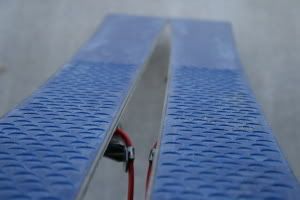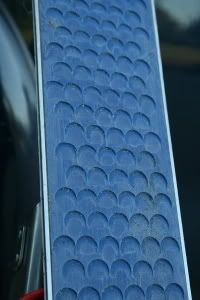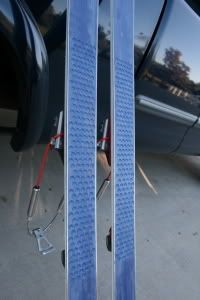I took a measurement from some "guide" skis and found that the base was patterened 7" in front of pin and 14" behind. I set the skis up on some blocks and clamped them in place. I then set up a jig to try to match the skis pattern left to right. I used the router with a small cutting bit. Set the dept of the plunge on the router. On the router there is a plastic plate for the base. I unscred it and inserted some wood shims to achieve the angle and reinstalled the screws. Next was to line up the router, plunge it, once it reached the depth, I pulled it towards the tail while releasing the plunge to gain the angle.
Here are a few pics of the bases now.



The skis worked great. I was able to climb without too many problems of sliding back. You are quickly able to determing how steep you can climb.
Here are some pics of the area we went out to ski.
This is looking north. In the distance is pyrmid peak .

This is looking south at mokelumne peak.

Starting down on one of the runs.

Another benefit of doing this to a set of skis is when the area you want to ski is a bit of a journey away. We traveled for about one hour to get to the area. This included ups and downs. Without skins, the downs are great! unlike skis you slide. The skis are a bit slower than normal but in my opinion it is worth it.
rockaukum

